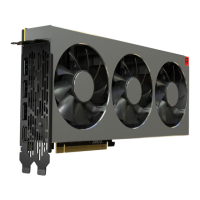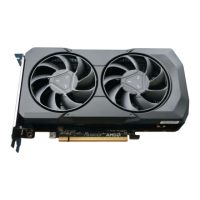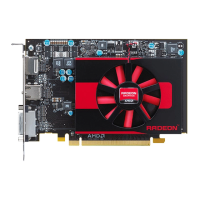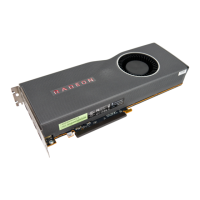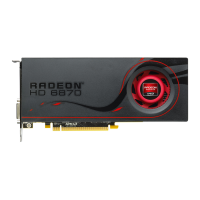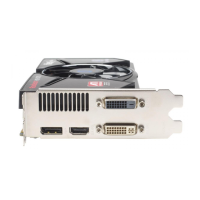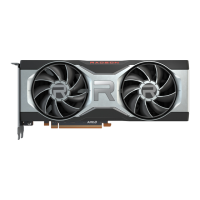The following table shows some examples of multiple display configurations; (A)
indicates an active adapter is used and (P) indicates a passive adapter is used. Display
abbreviations are DP = DisplayPort, DVI = dual-link DVI-I.
Table 3–2 Sample Display Configurations
Sample Display
Configuration
DVI-I
Connector
DVI-D
Connector
DP Connector HDMI
Connector
Total Output
5×DP - - Native (×5) - 5
DVI, 2×DP, HDMI Native - Native (×2) Native 4
DVI, DVI, DP Native Native Native - 3
DVI, DVI, VGA Native Native DP to VGA (A) - 3
For additional configuration information, visit http://www.amd.com/eyefinity.
Once displays are connected to the graphics card, you can change how your displays
are configured using the Control Center software application. For more information,
see Chapter 5 Using the Control Center Software (p. 17).
3.3 Using Adapters
The following procedure describes how to connect a display to your graphics card
using an adapter.
1. Turn off your computer and display.
2. Plug the adapter into the connection from your AMD Radeon graphics card and
tighten the thumbscrews (if there are any).
3. Connect your display's cable to the adapter and tighten the thumbscrews (if
there are any).
4. Turn on your display first, then your computer.
Use the Control Center software application to configure the new display.
3.4 Configuring the Display (Optional)
To change the display configuration or if you are experiencing an issue with the
display, do the following:
Note: If you are not experiencing any troubles with the display, no adjustments are
necessary.
1. Right-click on the desktop and, in the shortcut that appears, click Properties.
The Display Properties dialog appears.
2. Click the Settings tab and then select the screen resolution and color depth that
best suit your requirements and the display’s performance.
3. Click Advanced and then select the Monitor tab.
Display Configuration 9
© 2014 Advanced Micro Devices, Inc. AMD Radeon™ R7 260X Graphics

